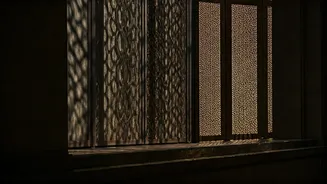Introduction to Window Grills
Window grills are essential for home security and aesthetic appeal. They act as a protective barrier while enhancing the overall look of a house. Modern
designs move beyond basic functionality, incorporating style and design. Selecting the suitable grill involves considering factors like the home's architecture, personal preferences, and the specific needs of each room. Window grills are available in various materials such as iron, steel, and aluminum, each offering different levels of durability, cost, and design flexibility. A well-chosen grill can significantly improve a home's curb appeal, adding value and providing peace of mind.
Popular Design Styles
Several popular design styles cater to diverse tastes and architectural styles. Geometric designs, featuring clean lines and patterns, offer a modern touch, while traditional grills often incorporate intricate wrought-iron details. Minimalist designs focus on simplicity and functionality, ideal for contemporary homes. Grills with integrated gardening spaces offer a unique blend of aesthetics and practicality. Wavy designs create a dynamic look, adding visual interest. Box window grills provide a structured, enclosed appearance. Understanding these diverse styles helps in choosing a grill that complements the home’s overall design. Further, considerations like the room's function and the homeowner's style preferences should inform the final decision to ensure the design aligns with the intended use and decorative goals.
Materials and Durability
The choice of material significantly impacts a window grill's durability, maintenance requirements, and appearance. Iron grills offer a classic look and robust security, often requiring regular painting to prevent rust. Steel grills provide a balance of strength and modern aesthetics, with good corrosion resistance. Aluminum grills are lightweight and resistant to rust, making them low-maintenance. Each material has specific benefits; iron provides a traditional feel, steel balances aesthetics with strength, and aluminum offers easy care. Homeowners should consider factors like local climate, security needs, and aesthetic preferences when selecting materials. Proper maintenance, such as regular cleaning and repainting, is essential to extend the lifespan and maintain the appearance of window grills.
Grill Designs for Living Room
Living room window grills should complement the overall design of the space, enhancing both aesthetics and security. Consider designs that match the room's interior style, whether modern, traditional, or minimalist. Geometric patterns, offering a contemporary look, are popular choices. Ensure the grill design allows sufficient natural light to enter the living room. Consider adding decorative elements that reflect personal taste, such as intricate patterns or custom designs. Selecting a design that harmonizes with the living room's furniture and decor contributes to a cohesive and inviting atmosphere. Window grills in the living room should provide security without compromising the room's style and comfort.
Balcony and Bedroom Grills
Balcony and bedroom window grills require careful consideration to balance security with functionality and aesthetics. Balcony grills should provide safety while allowing for views and ventilation. Designs that are fully covered or incorporate a secure mesh are beneficial for safety. Bedroom grills need to prioritize privacy and security, as well as allowing adequate airflow. Consider designs that complement the room's style, incorporating patterns or decorative elements. The choice of material and design should reflect the specific needs of each space, ensuring the grills offer both protection and aesthetic appeal. Prioritizing safety without sacrificing comfort and style is key when selecting grills for these areas.
Choosing the Right Design
Choosing the right window grill design involves assessing the home's architectural style, the functional needs of each room, and personal preferences. Evaluate whether the home is modern, traditional, or contemporary, and choose a grill style that complements the architecture. Consider the level of security required, opting for robust materials and secure designs in vulnerable areas. Determine the desired level of privacy and the importance of natural light. Think about integrating design elements that match personal taste, such as patterns or custom features. Choosing the right design requires balancing aesthetics, security, and personal preferences to create a harmonious and functional home environment. Thoroughly evaluate these factors to make an informed decision.
Maintenance and Cleaning
Regular maintenance is crucial for keeping window grills in good condition and extending their lifespan. Clean grills regularly to remove dust, dirt, and debris that can compromise their appearance and function. Use appropriate cleaning materials based on the grill's material—mild soap and water for most metals. For iron grills, regular painting is essential to prevent rust. Inspect grills periodically for damage or corrosion, repairing issues promptly to prevent further deterioration. Following these simple maintenance tips ensures that window grills remain attractive and functional for years to come. Regular care also maintains the value of the home and reinforces its safety measures.
Pros and Cons
Window grills offer many benefits but also have a few drawbacks. Pros include enhanced security, which prevents unauthorized entry and provides peace of mind. They increase property value, improving the home's aesthetic appeal. Grills add visual interest and can complement a home's design. Cons include the potential for obstructed views, depending on the grill's design. Some designs may require regular maintenance, like painting to prevent rust. Poorly designed or installed grills can detract from the home's aesthetics. Assessing the pros and cons helps homeowners make informed decisions about whether to install or upgrade window grills.












